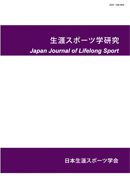Objectives: In this study, we assessed the efficacy of International exchange project, China-Japan Exercise class that uses ICT to promote daily exercise practice.
Methods: The exercise class was carried out in Atami-city, Japan and Shanghai-city, China. The participants were 29 women (Japanese: N=14, Chinese: N=15) aged over 60 years. The exercise class was short-term from 6 week. During the three-day period of the exercise class, the participants and instructors of both countries used Skype of ICT to have international communications. Preparation exercise, physical fitness measurement, and exercise practice, were
carried out in simultaneous relay interspersed utilizing Skype. Participants each other were to exchange views of health promotion and preventive care. Behavioral science techniques, such as
setting the target of exercise activity, self-monitoring and achievement evaluation, were consisted
of exercise class to enhance exercise habits. The exercise practice situations were reported by leveraging homepage, e-mail, and FAX. The assessments were measured by the target achievement rate, average number of steps, percentage of each exercise intensity level.
Results: All of the participants were able to continue for 6 weeks. The practical rate of exercise behavior goal during the period was more than 80%. The average number of steps was: 8,424∓4,219 steps at one week after the start, 9,210∓4,420 steps during the exercise class, and 9,865 ∓4,447 steps at one week after the exercise class.
Conclusion: The exercise practices of the participants became active, and it was suggested that it was effective to promote exercises. The exercise class was an experiment that used general ICT environment, and it is a feasible exercise class.
抄録全体を表示
